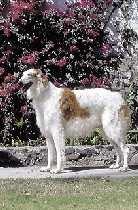| |
Prevalence of secondary glaucomas in North America
 |

Picture ©: Bayer Animal Health
|
 |
This study is one of the biggest ever performed: more than 1,5 million dogs in North America were included and observed for secondary glaucoma due to cataract formation, lens luxation or displacement, cataract surgery, uveitis, hyphema and intraocular neoplasia. A study covering 40 years and offering excellent insights in breed predispositions!
|
 |
 |
|  |
Information was obtained from the Veterinary Medical Data Base (VMDB) from all veterinary medical teaching hospitals in North America from March 1964 to March 2003.
Secondary glaucomas were diagnosed at the same examination or after the primary diagnosis was made, and included those associated with cataract formation, lens luxation, cataract surgery, uveitis of unknown cause, hyphema of unknown cause, and intraocular neoplasia. The data were evaluated by decade, breed, gender and age of presentation.
A total of 1 592 831 dogs were presented, and 9695 canine secondary glaucomas.
Secondary glaucoma associated with cataract formation represented 81% of all the canine secondary glaucomas.
Breeds (n = 7890 dogs) predisposed to secondary glaucoma and cataracts had an overall prevalence of 0.5%, but nearly 20% of all the cataractous dogs developed secondary glaucoma in at least one eye.
For the years 1994-2003, these breeds included the American Cocker Spaniel; Boston Terrier; Toy, Miniature and Standard Poodle; English Springer Spaniel; Bichon Frise; and Labrador Retriever.
The other forms of secondary glaucoma occurred less frequently, and included those glaucomas with lens luxation or displacement (779 dogs; 12.0%), postcataract surgery (528 dogs; 5.1%), with uveitis from unknown cause (399 dogs; 7.1%), with hyphema from unknown cause (117 dogs; 7.3%), and with intraocular neoplasia (19 dogs; 3.5%).
The risk of the secondary glaucomas from 1984 to 2002 was highest after the intracapsular lens extraction (ICLE), less in the extracapsular technique (ECLE), and lowest for the phacoemulsification/phacofragmentation method.
Prevalence of the canine secondary glaucomas ranges from 0.25% (1964-1973), 0.46% (1974-1983), 0.79% (1984-1993), to 0.80% (1994-2003) and are as frequent as the primary or breed-related glaucomas during these same time periods.
Source: Gelatt, Kirk N. & MacKay, Edward O. (2004)
Secondary glaucomas in the dog in North America.
Veterinary Ophthalmology 7 (4), 245-259.
Tell a friend
|
Print version
|
Send this article
|
|  |

Metastasis of a well differentiated perianal gland tumorPunica granatum associated with hepatotoxicosis in cattle Toceranib phosphate (Palladia®) in canine gastrointestinal stromal tumors Toceranib phosphate (Palladia®) in canine gastrointestinal stromal tumors Radioactive iodine uptake in hyperthyroid cats after rh-TSH Radioactive iodine uptake in hyperthyroid cats after rh-TSH Hypoechoic tissue changes in dogs with malignant prostatic lymphoma Hypoechoic tissue changes in dogs with malignant prostatic lymphoma Emphysematous gastritis in dogs and cats Emphysematous gastritis in dogs and cats Primary pulmonary histiocytic sarcoma in dogs Primary pulmonary histiocytic sarcoma in dogs Determining prognosis in canine sepsis Determining prognosis in canine sepsis  Correlation of plasma and tear glucose, creatinine and urea nitrogen in cats Correlation of plasma and tear glucose, creatinine and urea nitrogen in cats Perineal hernias in dogs - always a bilateral problem? Perineal hernias in dogs - always a bilateral problem? Pharmacokinetic of gabapentin in cats Pharmacokinetic of gabapentin in cats Follicular development of canine ovaries stimulated by eCG plus hCG Follicular development of canine ovaries stimulated by eCG plus hCG
|














